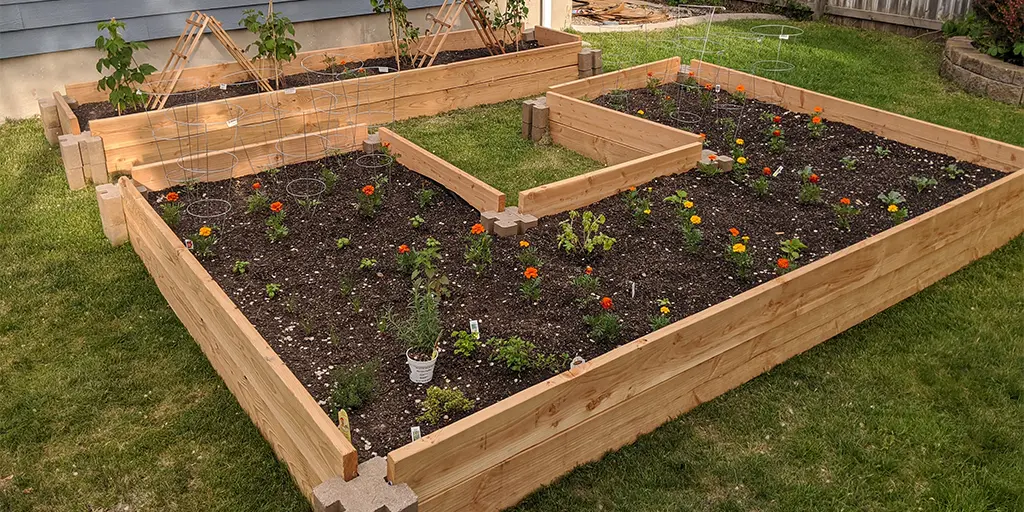The vegetable plot is most often built of wood (this must be chosen untreated), but many other materials allow the realization of the basic model: wicker, stone, bricks, metal, plants (boxwood, santolina, etc.).
Tip: the vegetable bed forms an ideal support for adding amenities. You can thus provide a removable structure for the wintering veil, or even enough to make a small greenhouse.
With what soil to fill a vegetable patch?
You have several options for filling your vegetable bed, raised or on the ground.However, the substrate for the vegetable bed must meet certain conditions:
- It must be loose, so that the rooting of your future plantations is facilitated. Metal garden beds meet most requirements.
- It must be rich, especially if the vegetable bed is raised or on feet, to provide enough nutrients to the plants.
- It must be draining, most plants do not appreciate having their roots drowned, without being too much because it must keep nutrients and enough humidity.
However, you must take into account your future plantations. For example, if you plan to install plants that do not tolerate limestone at all, you will use a humus mixture, suitable for heather soil plants. But in general, the substrate that fills the vegetable plots is not specific because the plants that are there are varied and rotate a lot.Once the vegetable patch is filled with the chosen mixture, you will water abundantly and several times so that this substrate is very moist when it is time to welcome the plantations.
Classic filling
The ideal way to fill a vegetable plot is a mixture of decomposed organic matter, compost or manure, and slightly clayey topsoil, which will retain water and fertilizing elements. You can also, especially in town if you don’t have a garden, fall back on good quality soil to which you add compost, or even vermiculite and peat with compost added, in equal parts (substrate recommended by Mel Bartholomew, the American designer of vegetable plots). Peat is however a non-renewable resource, so its use should be limited. Filling a vegetable bed with only potting soil or old soil is not advisable.
Namely: filling a raised or tiered vegetable bed is the same, the only difference being in the presence of a tarpaulin pierced at the bottom of the standing model which prevents the soil from escaping.
A permaculture vegetable patch
Another possibility: filling in the way of cultivation mounds. This consists of stacking layers of various materials, carbonaceous and nitrogenous materials, from the largest to the finest, inside the square. To learn more, read our article on how to make a permaculture vegetable bed.
- Start with boxes, once moistened, they provide an ideal ground for earthworms in particular.
- Then place logs or dead wood on top, avoiding large diameters. They already contain micro-organisms and fauna, fungi…
- Fill the gaps with RCW (Bois Raméal Fragmenté) and other debris and twigs.
- Then spread a layer of dead leaves, rich in carbon.
- Then a layer of mature manure and/or compost. Prefer horse manure for a good decomposition of the organic matter located below.
- Finish with a layer of soil from the garden collected on the surface of the soil. Clay soils are suitable because they retain heat from the decomposition process and moisture well. Finish filling the vegetable patch with the same sifted soil, more favorable to seedlings and young plants.
- Mulch the surface.
To find out more, visit https://gartendek.fr

